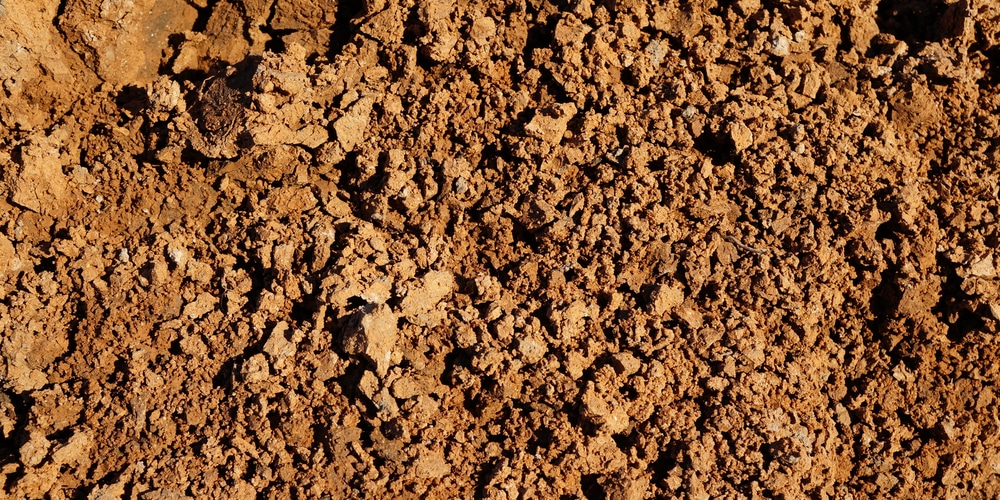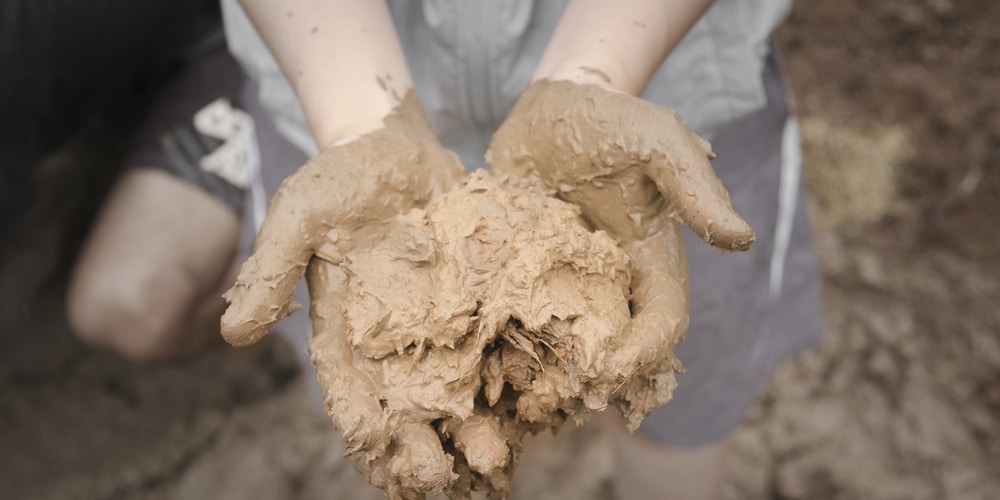Clay soil is naturally alkaline and has a pH range of between 8 and 10. Some plants like soil to be alkaline, while others prefer more neutral or even acidic soil. It may be challenging to grow much in soil that’s clay-like and very alkaline, so it’s best to attempt to alter the soil’s pH range.
There are some things you can do to lower clay soil pH if it is too high. Let’s look at how to tell whether your clay soil is acidic or alkaline. This article will also give you some tips on how to change your soil pH range.
Is clay soil acidic or alkaline?

The pH scale measures how acidic or alkaline something is. The scale runs from 0–14, with numbers under 7 being acidic and numbers above 7 being alkaline. Neutral soil has a pH of 7, which means it is neither an acid nor an alkaline.
Clay soil generally has a very high pH level, between 8 and 10, which means its alkaline. This means that plants cannot absorb nutrients in the ground as they should be able to when growing in healthy soil. You can increase your clay soil’s PH even more by using lime.
While some plants can cope with alkaline soils, most prefer soil with a pH level close to 6 to absorb iron, magnesium, phosphorus, and other nutrients in their roots. When clay soil is too alkaline, plants don’t get the nutrients they need to grow. Most plants will thrive when grown in soils with pH levels between 5 and 7.
How to lower the soil pH range?

Soil test kits are a great way to determine if your clay soil needs further treatment or if it is healthy as it is now. However, if you’ve been given advice from a professional that your soil should be adjusted to achieve better growth rates for certain types of plants, don’t think twice about trying their suggestions, as they likely know what’s best for each plant species under those conditions. Here are some things that can help you lower your soils pH range:
If your clay soil’s pH is higher than 7, you can try using organic matter such as manure before planting seeds or seedlings in the area. You can also add sulfur directly to the earth in powdered form. The safest time of year to do this is during the fall season, when there are no delicate seedlings in that area. It will take about six months for sulfur to change the soil’s pH range, so this is not a quick fix.
If you have clay soil and would like to convert it into a vegetable garden, you could try using raised beds instead. These can be built on top of the clay soil. They are typically 4 inches high and filled with good-quality topsoil.
It takes about two years for these beds to totally change the pH level in clay ground after planting seeds or seedlings, but they are worth it because they increase drainage greatly. The other option is attempting to break up the clay by hand or with machinery.
How can I quickly lower the soil’s pH range?
If you don’t have the time or patience to wait between 6 months and four years for the pH range of the soil to change, there are a couple of household ingredients that can be added to the earth to make it less alkaline.
Try adding organic coffee granules to the soil. Coffee is slightly acidic and will get to work straight away, reducing alkaline soils pH. Alternatively, use vinegar, as this common store cupboard essential is also very acidic and will help to neutralize your soil.
Plants that Do Well in Clay Soil

Just because clay soil is alkaline (and not acidic) doesn’t mean you can’t have a thriving yard or garden. Here’s a list of plants that do well in high PH (clay) soil.
1. Apple trees are 6-10 feet tall with pink flowers in the spring and disease-resistant fruit in late summer to early fall.
2. Azaleas grow well in clay soil and produce beautiful pink, red or white flowers in the spring.
3. Hydrangeas are ideal for clay soils because they thrive where there is low soil drainage.
5. Lavender plants are best planted in dry regions with well-draining, lean soil like clay because it thrives on little water.
6. Peonys grow well in clay soil and produce pink, red or white flowers in the spring.
7. Roses thrive in clay soil that drains well and produces beautiful flowers of many colors.
8. Sunflowers tolerate poor soil including clay with their large size, long blooming time, and strong stalks that support the heavy flowers.
9. Turfgrass is a good grass for clay soil. Also, if for a lawn if your yard is on a slope because it’s more durable than other plants.
Conclusion
Most clay soils are alkaline and have a pH range of between 8 and 10. It can be challenging to grow plants in clay soil as it’s very dense, and many plants can’t cope with the high alkaline levels.
In reality, thousands of different types of plant species thrive when grown in alkaline soils, so do some research on which types would be best for you. Alternatively, you can change the pH range of your soil by adding compost or sulfur to the earth.
Related: Does Vinegar Kill Grass Roots?
